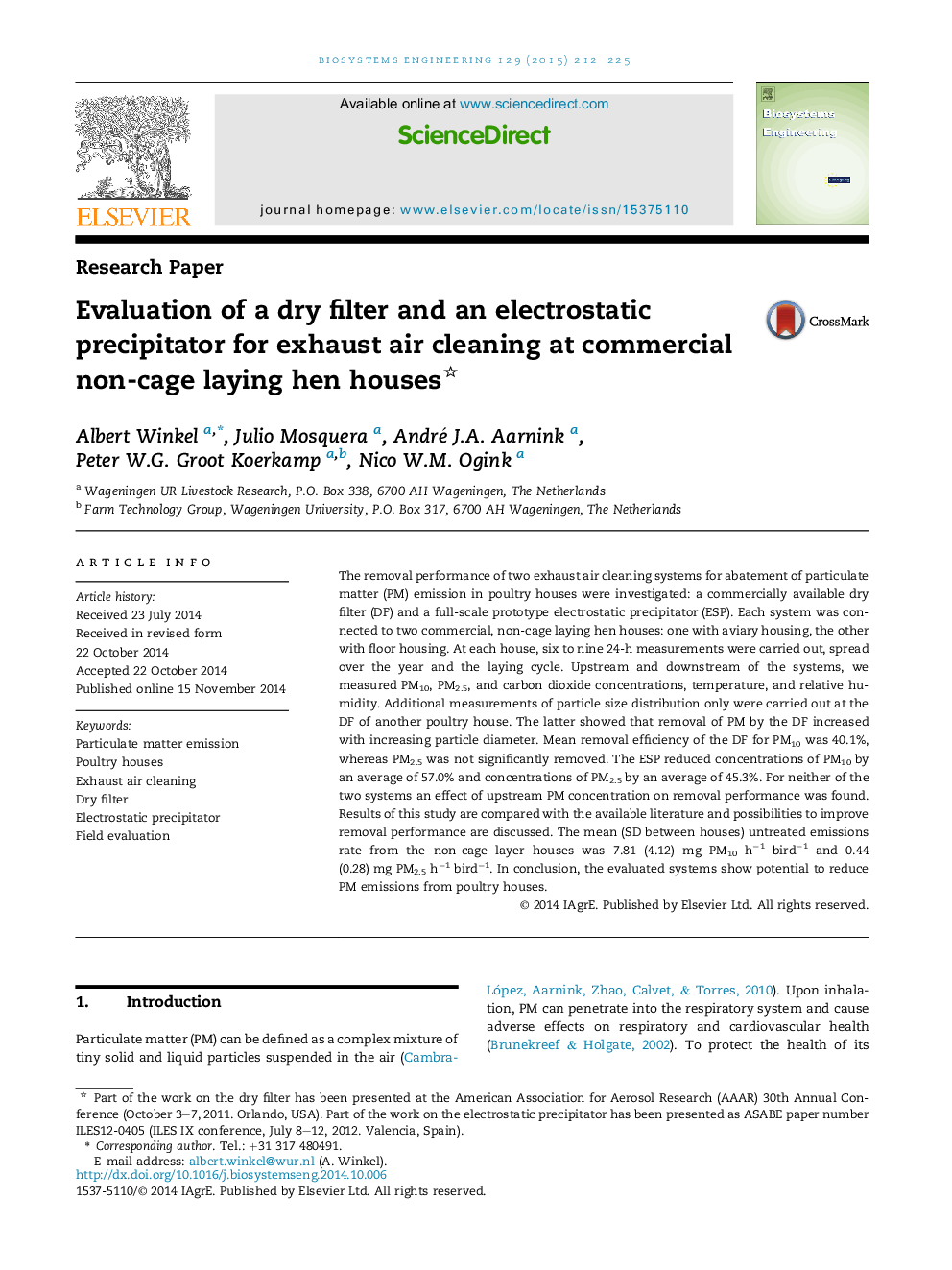| Article ID | Journal | Published Year | Pages | File Type |
|---|---|---|---|---|
| 1711065 | Biosystems Engineering | 2015 | 14 Pages |
•We evaluated two particulate matter abatement systems at five poultry houses.•Removal efficiency of the dry filter increased with particle diameter.•The electrostatic precipitator reduced both PM10 and PM2.5.•The current state of knowledge and possible system optimisation are reviewed.•Poultry house emission rates of PM10 and PM2.5 are reported.
The removal performance of two exhaust air cleaning systems for abatement of particulate matter (PM) emission in poultry houses were investigated: a commercially available dry filter (DF) and a full-scale prototype electrostatic precipitator (ESP). Each system was connected to two commercial, non-cage laying hen houses: one with aviary housing, the other with floor housing. At each house, six to nine 24-h measurements were carried out, spread over the year and the laying cycle. Upstream and downstream of the systems, we measured PM10, PM2.5, and carbon dioxide concentrations, temperature, and relative humidity. Additional measurements of particle size distribution only were carried out at the DF of another poultry house. The latter showed that removal of PM by the DF increased with increasing particle diameter. Mean removal efficiency of the DF for PM10 was 40.1%, whereas PM2.5 was not significantly removed. The ESP reduced concentrations of PM10 by an average of 57.0% and concentrations of PM2.5 by an average of 45.3%. For neither of the two systems an effect of upstream PM concentration on removal performance was found. Results of this study are compared with the available literature and possibilities to improve removal performance are discussed. The mean (SD between houses) untreated emissions rate from the non-cage layer houses was 7.81 (4.12) mg PM10 h−1 bird−1 and 0.44 (0.28) mg PM2.5 h−1 bird−1. In conclusion, the evaluated systems show potential to reduce PM emissions from poultry houses.
